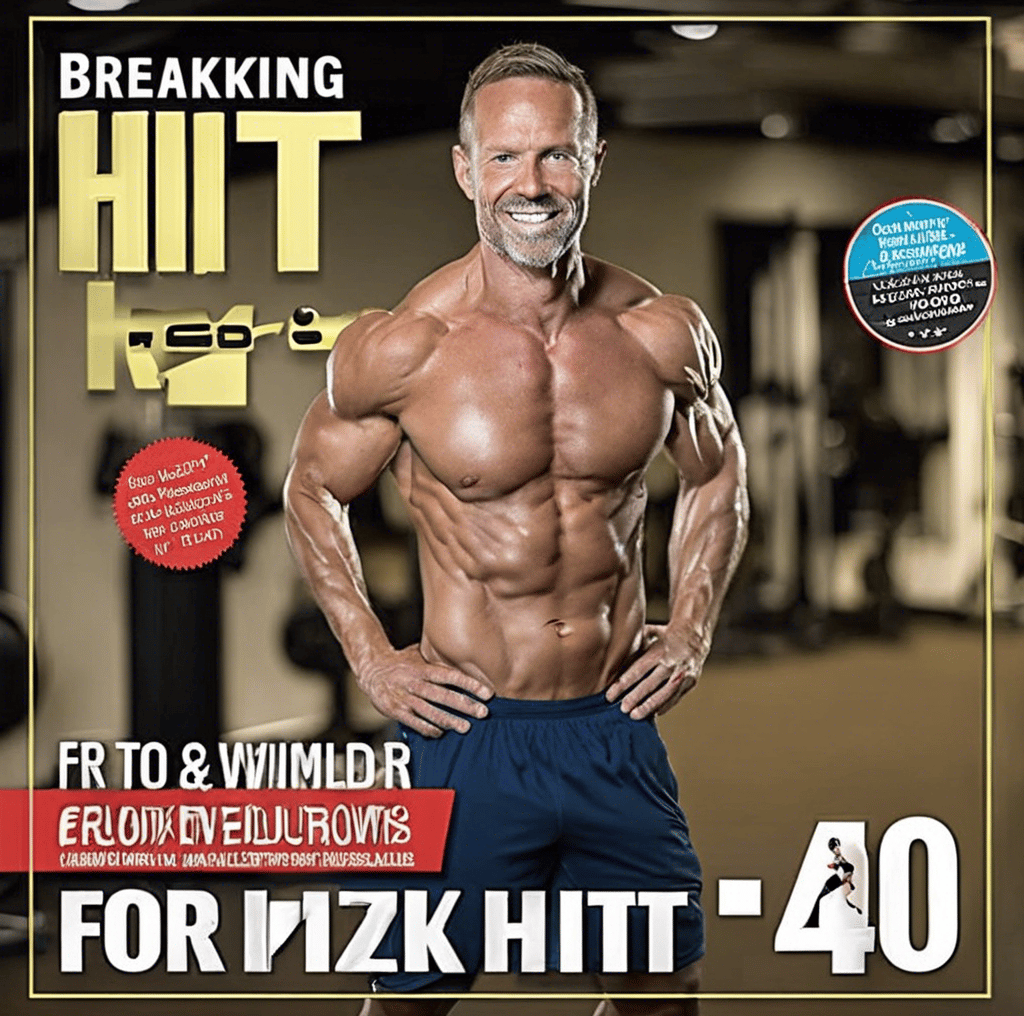HIIT for the 40+ Crowd: How to Maximize Fat Loss Without Overdoing It
Blog post description.
10/13/20244 min read


### HIIT for the 40+ Crowd: How to Maximize Fat Loss Without Overdoing It
High-intensity interval Training (HIIT) has become one of the most popular fitness trends for people looking to burn fat, improve cardiovascular health, and increase overall fitness in a short amount of time. But for those over 40, jumping into a high-intensity workout can feel intimidating—and with good reason. As we age, our bodies become more susceptible to injury and require a bit more recovery time. Fortunately, HIIT can be tailored specifically for the 40+ crowd, helping you maximize fat loss without overdoing it.
In this post, we’ll explore how to safely incorporate HIIT into your routine, optimize fat-burning, and protect your body as you work toward your fitness goals.
---
### What is HIIT?
HIIT involves alternating short bursts of intense exercise with periods of lower-intensity activity or rest. This combination of high effort followed by recovery stimulates your metabolism, burns calories, and improves cardiovascular health, often in just 20-30 minutes. While HIIT is renowned for its efficiency, the intensity can take a toll on joints and muscles, especially for people over 40. That’s why it’s important to adjust your HIIT routine to meet the needs of your body.
---
### Why HIIT Works for People Over 40
As we age, our metabolism slows down, and it becomes harder to shed excess weight, especially around the midsection. HIIT is effective at boosting metabolism and improving fat oxidation—meaning your body burns more fat during and after workouts, even when you're resting. Additionally, HIIT can be adjusted to accommodate fitness levels, allowing people in their 40s, 50s, and beyond to benefit from its fat-burning potential without risking injury.
---
### How to Safely Incorporate HIIT After 40
Here are key strategies to ensure you maximize fat loss through HIIT while protecting your joints, muscles, and overall health.
#### 1. Warm-Up Thoroughly
Warming up before any high-intensity workout is crucial, but it's especially important as you age. As muscles and joints tend to be stiffer, taking the time to prepare your body for the upcoming effort helps prevent injury.
Quick Warm-Up Tips:
- Spend 5-10 minutes on dynamic stretches or low-intensity movements like walking or light jogging.
- Incorporate arm circles, leg swings, and hip rotations to get blood flowing and improve joint mobility.
#### 2. Start Slow and Build Intensity Gradually
If you’re new to HIIT or returning to fitness after a break, it’s important not to go full throttle right away. Start with shorter intervals and lower-impact exercises, then gradually increase intensity as your body adapts.
Beginner HIIT Routine:
- 20 seconds of effort followed by 40 seconds of rest (repeat 5-8 times).
- Start with low-impact moves like step-ups, bodyweight squats, or stationary cycling.
#### 3. Choose Joint-Friendly Exercises
One of the challenges with HIIT is that some exercises can be tough on the knees, hips, and back—areas that are often more vulnerable after 40. Opt for joint-friendly, low-impact moves that still provide a great workout.
Low-Impact HIIT Exercises:
- Modified burpees (no jump): Focus on stepping back into a plank rather than jumping.
- Stationary cycling: This is excellent for intervals and easy on the joints.
- Bodyweight squats: Great for toning legs and core.
- Mountain climbers (slow or modified): A great cardio move that’s easier on the joints if done slowly.
#### 4. Focus on Form, Not Speed
It’s easy to get caught up in the fast-paced nature of HIIT, but the proper form should always take precedence over how quickly you’re moving. Poor form can lead to injuries, especially for people over 40, whose tendons and ligaments may be more prone to strain.
Tips for Good Form:
- Engage your core throughout every movement.
- Avoid locking out your knees or elbows during exercises.
- Keep your movements controlled and steady, even in high-intensity bursts.
#### 5. Allow for Recovery Time
Recovery becomes more essential with age. Overdoing HIIT without giving your muscles and joints time to recover can lead to fatigue, burnout, or injury. Schedule rest days between HIIT sessions and mix in low-intensity activities like walking, yoga, or stretching.
HIIT Frequency:
- Aim for 2-3 HIIT sessions per week with at least one rest or active recovery day in between.
---
### Maximizing Fat Loss with HIIT After 40
Now that you know how to safely structure your HIIT workouts, here are some additional tips to maximize fat loss.
#### 1. Incorporate Strength Training
While HIIT is excellent for fat loss, combining it with strength training will help you maintain and build lean muscle mass, which naturally declines after 40. Lean muscle burns more calories at rest, so the more muscle you have, the easier it is to shed fat.
Suggested Strength Moves:
- Dumbbell squats
- Push-ups
- Resistance band exercises
- Deadlifts
#### 2. Keep Your Workouts Short but Intense
The beauty of HIIT is that it doesn’t require long workout sessions to be effective. Aim for 20-30 minutes of alternating high-intensity and low-intensity intervals. This will maximize calorie burn without putting excessive stress on your body.
#### 3. Monitor Your Progress
As your fitness improves, gradually increase the intensity or duration of your HIIT intervals. Use a heart rate monitor to track how hard you’re working, aiming for about 80-85% of your maximum heart rate during high-intensity intervals.
---
### Final Thoughts
HIIT can be a powerful tool for fat loss, especially for those over 40, but it’s important to approach it with care. By warming up properly, choosing low-impact exercises, focusing on form, and allowing adequate recovery, you can safely maximize fat loss and improve overall fitness. Remember that consistency is key, so gradually build intensity over time and enjoy the benefits of this efficient, fat-burning workout.
Stay active, listen to your body, and you’ll stay fit and strong well into your 40s and beyond!
